⬅ Click here to return to the Winter Camp portal
| Day | Schedule |
|---|---|
| Monday 12/28/2020 |
Winter Survival Meet Luna, the Virginia Opossum Start a Nature Observation Journal Click on follow-up DIY activities below: Print Monday's activities |
Nature Walk Bingo!
Practice your observation skills next time you go on a walk and you will start to notice lots of nature in your neighborhood!
Here's what you will need for this activity:
✅ Click here to open and print the Nature Walk Bingo✅ Colored pencils, markers, or crayons.
Go for a walk outside with your family and bring a Nature Walk Bingo sheet for each person.
When you find something in nature that matches a square on your bingo sheet, color it in. Remember to leave what you find in nature (except trash! That goes in a trash can).
When you find and color in five squares across, down, or diagonal, you can say "Bingo!"
If you don't find everything on your walk, save your bingo sheet and take it with you on your next walk.
When you find and color in all of the squares, you can say, "Bonus Bingo!" Congratulations, you finished the game!
Scroll down for more activities
⬇
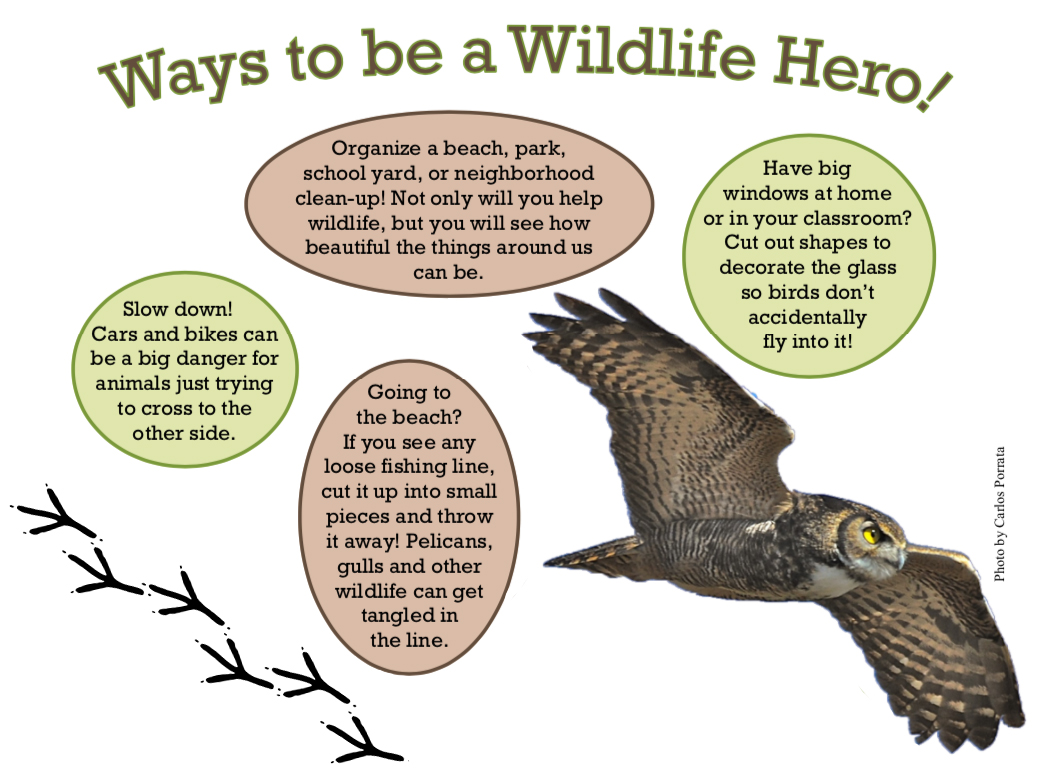
Mashed Root Veggie Recipe
SNACK BREAK!
If going on a nature walk made you hungry, you're in luck! Try making this easy recipe for delicious Mashed Root Veggies inspired by Gophers!
Click here to open and print the Mashed Root Veggie recipe.
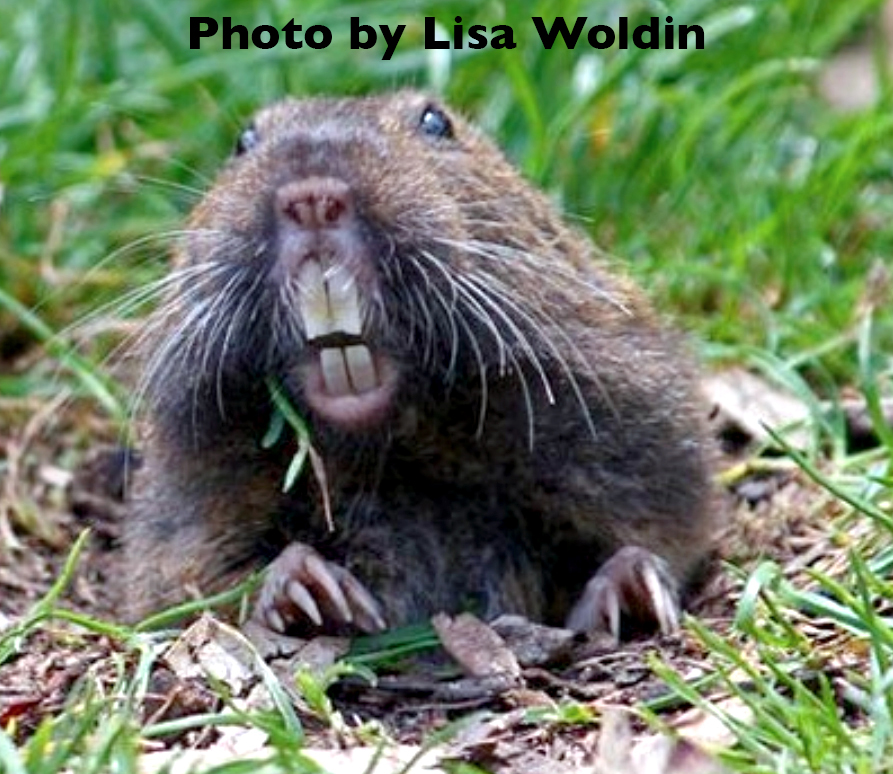 Gophers are small rodents that live in underground burrows which they dig with their massive front teeth, called incisors. Their lips close behind their teeth when they dig, which stops dirt from getting into their mouth. They pull roots, bulbs, and leaves down into the safety of their burrow to avoid predators.
Gophers are small rodents that live in underground burrows which they dig with their massive front teeth, called incisors. Their lips close behind their teeth when they dig, which stops dirt from getting into their mouth. They pull roots, bulbs, and leaves down into the safety of their burrow to avoid predators.
Some irresistible root vegetables include sweet potatoes, carrots, parsnips, and turnips, which are packed with nutrients that keep gophers (and people) healthy and energized. Gophers do not hibernate in the winter, but they do spend a lot of time in their burrows feasting on all of the roots, tubers, and stems they have stored in chambers.
Try this Mashed Root Veggie recipe to see why gophers are always on the search for tasty roots!

Add in any of your favorite root veggies like fennel, sunchoke, celeriac, or rutabaga for a variety of flavors and nutrients.
Ingredients:
- 1 sweet potato
- 1 parsnip
- 1 turnip
- 1 carrot
- 1 tsp salt
- ¼ cup olive oil
- ¼ cup vegetable broth
- Salt and pepper to taste
- Optional: garlic powder
Steps:
- Wash your hands!
- Wash all of the root veggies.
- With the help of an adult, cut all of the root veggies into about 2 inch pieces. Place all the veggies in a large pot and fill with cool water to cover. Add a teaspoon of salt.
- Adult: Bring the pot of veggies to boil over medium heat and simmer for about 30 minutes, or until the veggies are very tender. Then drain the veggies and place them in a large mixing bowl.
- Adult: Heat up vegetable broth in the microwave or in a small saucepan until warm.
- Now for my favorite part: Mash the veggies! Use a fork or a potato masher to mash the veggies. Stir in the warm vegetable broth and olive oil until the liquid is absorbed and the veggies are smooth.
- Season with salt and pepper, and add any yummy seasonings like garlic powder or smoked paprika.
Top with your favorite mashed potato toppings and enjoy!
Scroll down for more activities
⬇
Meet Luna, our Wildlife Ambassador
Virginia Opossum!

Today we're taking a close look at opossums with our Wildlife Ambassador Virginia Opossum, Luna!
You might not have seen one, because they are nocturnal, which means they are most active at night.
Opossums can live in many different kinds of habitats. They live in woodlands, wetlands, and even in cities!
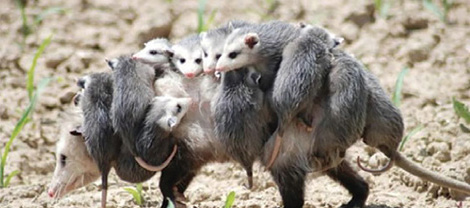
Opossums are marsupials (like kangaroos, koalas, and wombats) which means the mother keeps her newborn babies in her pouch where they grow and drink milk.
Once the babies grow big enough, they crawl out of the pouch and ride around on their mother's back until they can take care of themselves.
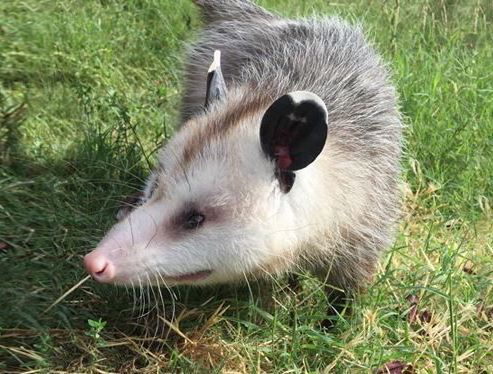
Opossums are shy, gentle animals. See if you can notice which senses Luna uses to find food, stay safe, and move around in the night.
Watch her enjoy her lunch, and learn why these marsupials are so important to keeping our yards and neighborhoods neat and tidy.
Video clip is 6 minutes long.
Did you catch the part where Melissa said Luna the Virginia Opossum has 23 whiskers to find her way in the dark? Although opossums' eyesight isn't that great, they make up for it by having a good memory and a very strong sense of smell to sniff out their food. They are omnivores which means they eat plants, animals, insects, and just about anything they can munch on with their 50 teeth!
One of the tasty ingredients in Luna's lunch today was smelt, which is a type of small fish. Did you find out what else she ate for lunch?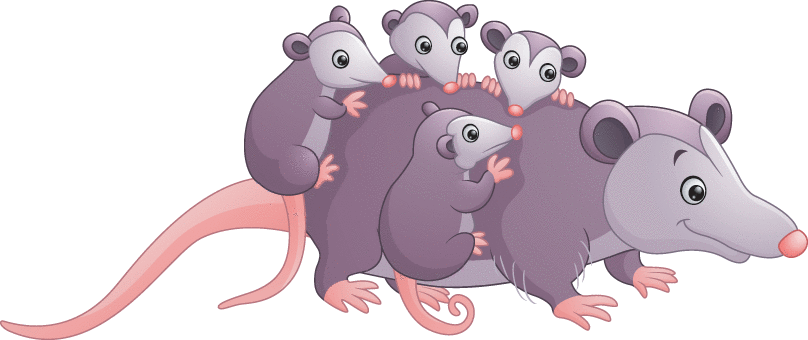
Watch these orphaned wild baby opossums get a health check-up in WildCare's Wildlife Hospital. These babies will grow up at WildCare until they are old enough to be released.
Video clip is 1 minute long.

Opossums are important animals in our neighborhoods because they eat many small critters that we call pests!
They feast on snails, slugs, cockroaches, and ticks.
Let's give a big THANK YOU to opossums for keeping our neighborhoods clean and tidy!
You can help opossums living in your neighborhood!
Keep your cat indoors, or give them a special collar that makes them more visible to wildlife.
Before releasing your dog into your yard at night, take a look around for nocturnal wildlife and make some noise to give wildlife a chance to move on.
Scroll down for more activities
⬇
Animal Jokes and Puzzles
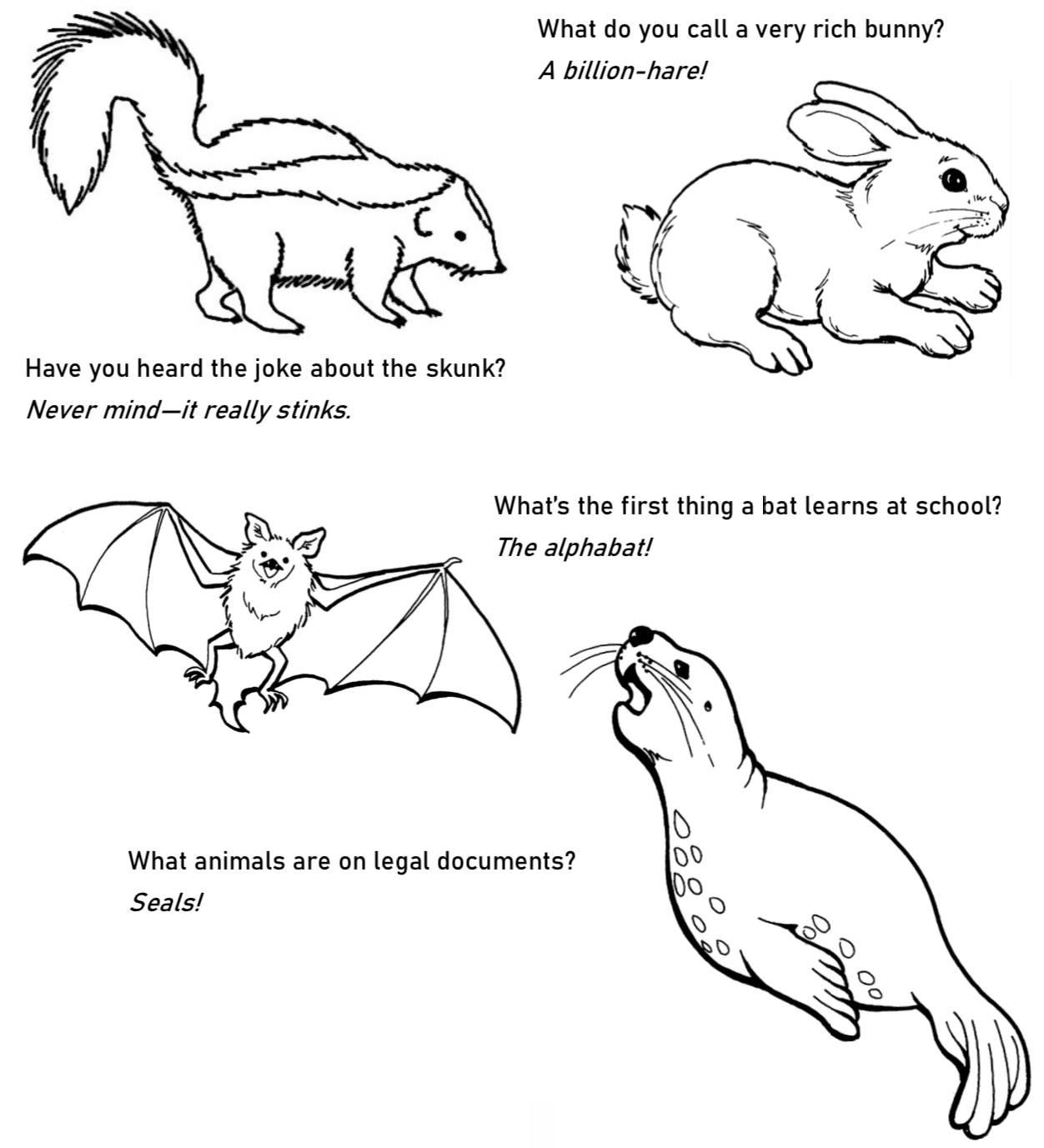
Mammal Riddles in Rhyme
What animal is each of these riddles about?
Finding food when night is inky.
When upset, he’s rather stinky...
A long, thin tail and 50 teeth.
Mothers have a pouch beneath...
Flying quickly in the night,
Finding moths a tasty bite...
Breathing air while swimming free,
Singing songs beneath the sea...
Quills protect from enemies,
Or this guy just climbs a tree...
A head of hair for all to view;
Did you know that you are one, too? ...
Questions and Answers
Find answers to your questions about Winter Camp below, or send us an email
-
How does my camper join the Zoom meeting?
Click on the Zoom link sent to your email with your registration confirmation. You will be prompted to either download the Zoom app and join from there, or you can choose to join from your web browser without creating an account. The password is embedded in the link; do not share the link with anyone outside of camp!
-
Will my camper get to talk and ask questions?
Yes! Campers will have plenty of time to ask questions, share stories, and interact with other campers and our wildlife educators over Zoom. Sometimes campers will be automatically muted while our wildlife educators are presenting.
-
Will there be any live animals?
Yes! Campers will get to ask questions and interact with our wildlife educators as they introduce a different non-releasable Wildlife Ambassador animal each day of camp.
-
What does my camper need to bring each day?
Pick up a complimentary packet of printed materials from WildCare before the week of camp, or download and print the craft activity for each day. Please have your camper join the Zoom meeting ready with the printed activity for the day, scissors, and coloring supplies.
-
When can I pick up my packet of printed craft materials from WildCare?
Please pick up ahead of time 7 days a week 9am-5pm from December 9th to December 23rd. Come to our front gate and push the Ring button to be assisted. Let the staff member who greets you know that you are here to pick up your Winter Camp packet, and they will bring it to you.
WildCare's address is:
76 Albert Park Lane, San Rafael, CA 94901.

 Click here to open and print the Nature Walk Bingo
Click here to open and print the Nature Walk Bingo